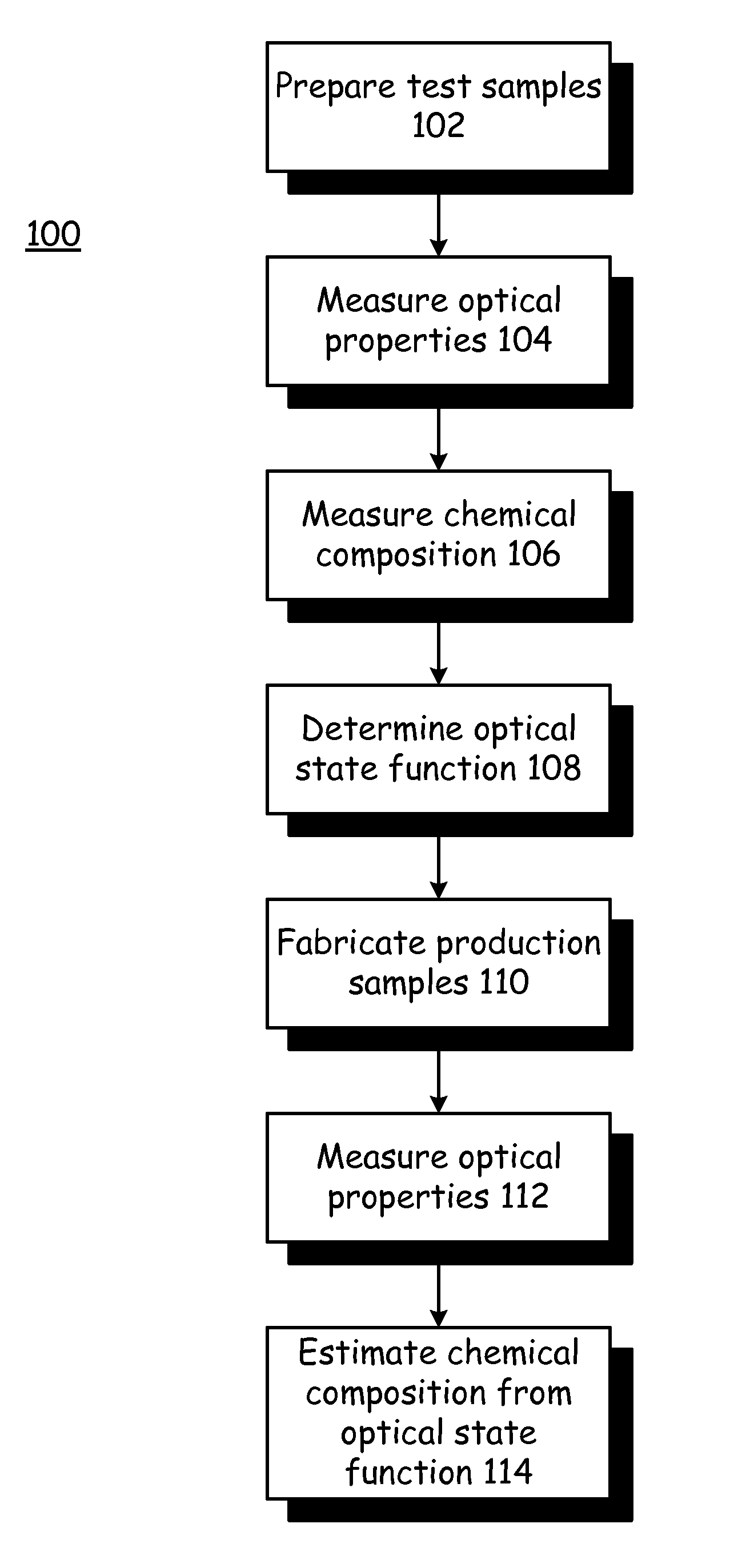Determining thin film stack functional relationships for measurement of chemical composition
a thin film stack and functional relationship technology, applied in the field of integrated circuits, can solve the problems of difficult determination of the chemical composition of these layers, and achieve the effects of improving performance, poor correlation, and improving correlation
- Summary
- Abstract
- Description
- Claims
- Application Information
AI Technical Summary
Benefits of technology
Problems solved by technology
Method used
Image
Examples
example
[0035]An example of the step of constructing the optical state function is provided below, in reference to Table 1.
[0036]
TABLE 1Optical state value matrix for nitrogen (N) fractionfor a two-layer model of HfSiON over an underlyingSiON layer (over silicon substrate).Nnormalized n(wavelength)XPSn′(160 nm)n′(180 nm)n′(320 nm)n′(633 nm)N offsett / t avg0.1631.254851.331021.313421.232780.089950.967940.1481.195461.250451.192471.126690.088500.996830.1711.298701.375481.382321.296590.086201.044500.1751.146951.203201.208771.136490.097320.834780.1711.093231.126131.097631.038820.097200.836750.1241.094801.180081.101991.033500.105910.702840.1661.393281.476741.473361.382290.077941.239100.1511.321361.394161.316861.242670.077671.246060.0951.411471.536021.405561.316000.081691.14581
[0037]The optical state function that is regressed from this optical state data is: Nitrogen fraction=0.010*n′(160 nm)-0.607n′(180 nm)+0.464n′ (320 nm)-0.640*N offset+0.058*T / Tavg+0.347
[0038]“N XPS”=fraction of nitrogen measu...
PUM
| Property | Measurement | Unit |
|---|---|---|
| chemical composition | aaaaa | aaaaa |
| optical properties | aaaaa | aaaaa |
| optical state function | aaaaa | aaaaa |
Abstract
Description
Claims
Application Information
 Login to View More
Login to View More - R&D
- Intellectual Property
- Life Sciences
- Materials
- Tech Scout
- Unparalleled Data Quality
- Higher Quality Content
- 60% Fewer Hallucinations
Browse by: Latest US Patents, China's latest patents, Technical Efficacy Thesaurus, Application Domain, Technology Topic, Popular Technical Reports.
© 2025 PatSnap. All rights reserved.Legal|Privacy policy|Modern Slavery Act Transparency Statement|Sitemap|About US| Contact US: help@patsnap.com



